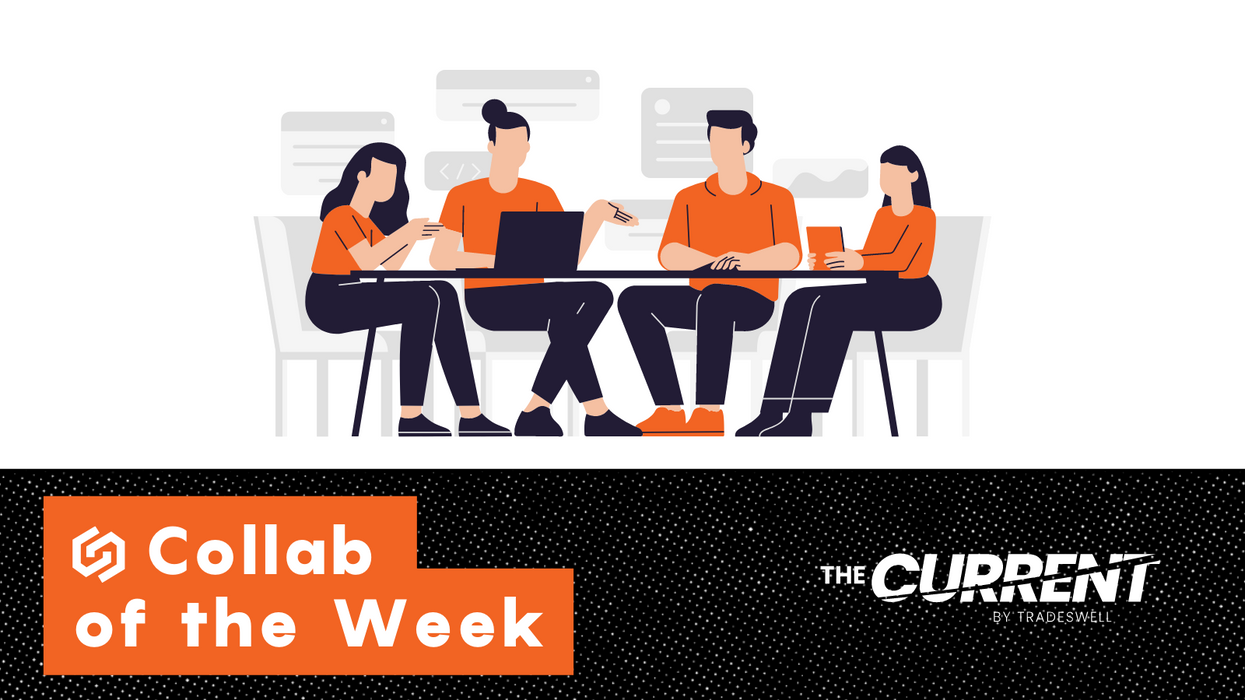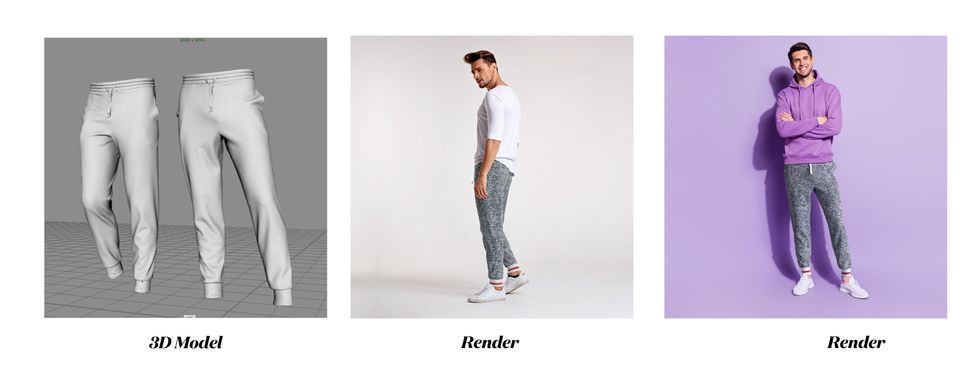Operations
26 May 2022
Loop and Happy Returns partner on in-person ecommerce exchanges
Inside the integration between Shopfiy-focused Loop and PayPal's returns service.

(Illustration by The Current)
Inside the integration between Shopfiy-focused Loop and PayPal's returns service.

(Illustration by The Current)
Thanks to a new partnership, DTC brands can offer in-person returns.
Loop Returns, a platform which enables returns and exchanges for more than 1,200 brands on Shopify, has a new integration with Happy Returns by PayPal that will allow the items that don't work out quite right to be taken to drop-off locations.
Happy Returns stations Return Bars inside locations like FedEx offices and Staples. At those sites, shoppers can return an item without having to use a label or a box. Shoppers scan a QR code, get a refund and the company then handles the returned items in reusable totes.
With this integration, merchants that use Loop will be able to offer return drop-off at more than 5,000 locations across the US. The collaboration came together organically between the companies, as both entities wanted to offer more convenience with returns.
“With ecommerce returns growing more frequent and often more tedious for consumers, this partnership provides a highly sought-after solution for merchants and their customers,” said Aaron Schwartz, president at Loop Returns, told The Current.
With increased ecommerce adoption, the number of returns is likely to grow. According to the National Retail Federation, about $218 billion worth of merchandise was returned in 2021, meaning returns accounted for 21% of the total spend in online retail in the US.
“Because these returns can be such a cost center, brands not only want to reduce the rate of returns but also improve the process for both themselves and their customers,” Schwartz said. “Additionally, because ecommerce is growing and more DTC brands are being created, the crowded nature of the space can make it more difficult to build long-term customer loyalty. If a purchase experience is so-so, the consumer is more likely to consider exploring other options in the future. But, by offering a variety of return methods and reducing post-purchase pain points, customers can have an experience that can increase brand affinity and the chances they’ll return to purchase again.”
The partnership is designed to bolster that customer experience. Returns can feel like a behind-the-scenes process. They happen post-purchase, and involve logistics. In fact, the process behind returns is grouped under the lesser-known category of reverse logistics. But it's still an area where a shopper interacts with a brand. That means there is opportunity to provide value by offering ease and choice, and even gain the kind of satisfaction that will lead to a repeat purchase. Provide offerings that show you're on the side of the customer and the environment, and it's also a chance to communicate brand values.
“With Loop X Happy Returns, merchants will be able to reduce costs while increasing sustainability and retain more revenue while delighting their customers,” Schwartz said.

(Logo via Loop and Happy Returns)
As with any partnership, the Loop and Happy Returns collaboration holds potential benefits for both of the entities that are teaming up. For Loop, the ability to add an offline capability for returns was a big advantage.
Loop has always offered a variety of return options, such as drop-off at FedEx or UPS, pick-up at home. This allows it to offer more choice.
“Adding Happy Returns to the portfolio of great options increases the likelihood that we can offer the ‘right’ experience to a consumer and Shopify brand. In the post-COVID era of shopping, we hear a lot about crafting personalized experiences. The post-purchase aspect of the customer journey in ecommerce returns is no different,” said Schwartz. “Some customers may prefer in-person returns, while others may not. Everyone is different. But by offering customers as much choice as possible, we can ensure that we are covering all of our 'bases' as a returns provider and reducing potential points of friction.
Schwartz said nearly 62% of shoppers have stated that they are more likely to shop online if there’s an option to make a return at an in-person location.
“Because of that, it’s critical for us to support our merchants by offering shoppers this level of flexibility when they return goods,” said Schwartz.
For its part, Happy Returns' Return Bars look to streamline returns by offering a central location that allows it to group many individual returns together in a single shipment. PayPal took steps to grow Happy Returns earlier this year, making the service free for PayPal Checkout merchants and announcing an expansion to 5,000 locations, including 1,300 Ulta Beauty stores. For Happy Returns, Loop brings expertise in helping brands exchange a product, helping to keep purchase revenue in place even if an item is returned.
“So Happy Returns can expand its customer reach with our new partnership since they’re able to tap into brands who deeply value revenue-retention and have chosen Loop. That allows Happy Returns to increase foot traffic for its retail partners that offer Return Bar services at their brick-and-mortar locations,” Schwartz said.
It’s an example of how ecommerce can embrace a blend of digital and in-person experiences. Shoppers have shown they like the choice and convenience of shopping online, and built habits around ecommerce during the pandemic. But with more reopening activities, they are comfortable moving between physical and digital settings. This partnership is part of a broader vision aimed at making returns easier for shoppers. They’ll speak to customers to learn whether it's successful as they go.
“We have a long-term vision for this partnership, and our ultimate goal is to diminish friction points for the customer wherever possible,” said Schwartz. “Success will ultimately be determined by the feedback we receive from our merchants and their customers.”
On a global level, there are benefits for brands that are mindful of reducing their footprint. With an in-person return, an item doesn't have to be boxed up. That means less cardboard and plastic. At the same time, Happy Returns’ reusable totes are designed to reduce waste.
“This in-person return option benefits us all as it reduces packaging and individual shipments, helping to lessen our impact on the environment,” Schwartz said.
Amazon partnered with Hexa to provide access to a platform that creates lifelike digital images.
A 3D rendering of a toaster from Hexa and Amazon. (Courtesy photo)
Amazon sellers will be able to offer a variety of 3D visualizations on product pages through a new set of immersive tools that are debuting on Tuesday.
Through an expanded partnership with Hexa, Amazon is providing access to a workflow that allows sellers to create 3D assets and display the following:
Selllers don't need prior experience with 3D or virtual reality to use the system, according to Hexa. Amazon selling partners can upload their Amazon Standard Identification Number (ASIN) into Hexa’s content management system. Then, the system will automatically convert an image into a 3D model with AR compatibility. Amazon can then animate the images with 360-degree viewing and augmented reality, which renders digital imagery over a physical space.
Hexa’s platform uses AI to create digital twins of physical objects, including consumer goods. Over the last 24 months, Hexa worked alongside the spatial computing team at Amazon Web Services (AWS) and the imaging team at Amazon.com to build the infrastructure that provides 3D assets for the thousands of sellers that work with Amazon.
“Working with Amazon has opened up a whole new distribution channel for our partners,” said Gavin Goodvach, Hexa’s Vice President of Partnerships.
Hexa’s platform is designed to create lifelike renderings that can explored in 3D, or overlaid into photos of the physical world. It allows assets from any category to be created, ranging from furniture to jewelry to apparel.

The result is a system that allows sellers to provide a new level of personalization, said Hexa CEO Yehiel Atias. Consumers will have new opportunity see a product in a space, or what it looks like on their person.
Additionally, merchants can leverage these tools to optimize the entire funnel of a purchase. Advanced imagery allows more people to view and engage with a product during the initial shopping experience. Following the purchase, consumers who have gotten a better look at a product from all angles will be more likely to have confidence that the product matches their needs. In turn, this can reduce return rates.
While Amazon has previously introduced virtual try-on and augmented reality tools, this partnership aims to expand these capabilities beyond the name brands that often have 1P relationships with Amazon. Third-party sellers are an increasingly formidable segment of Amazon’s business, as they account for 60% of sales on the marketplace. Now, these sellers are being equipped with tools that enhance the shopping experience for everyone.
A video displaying the new capabilities is below. Amazon sellers can learn more about the platform here.
Hexa & Amazon - 3D Production Powerhousewww.youtube.com